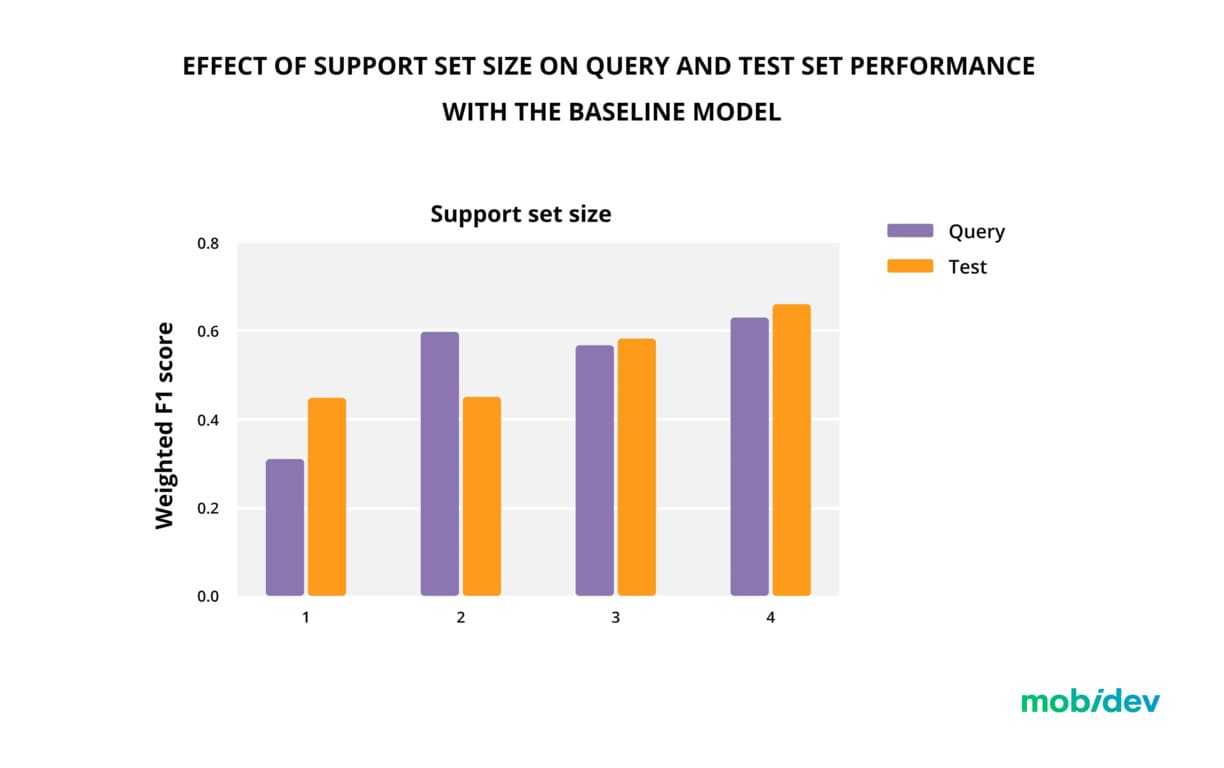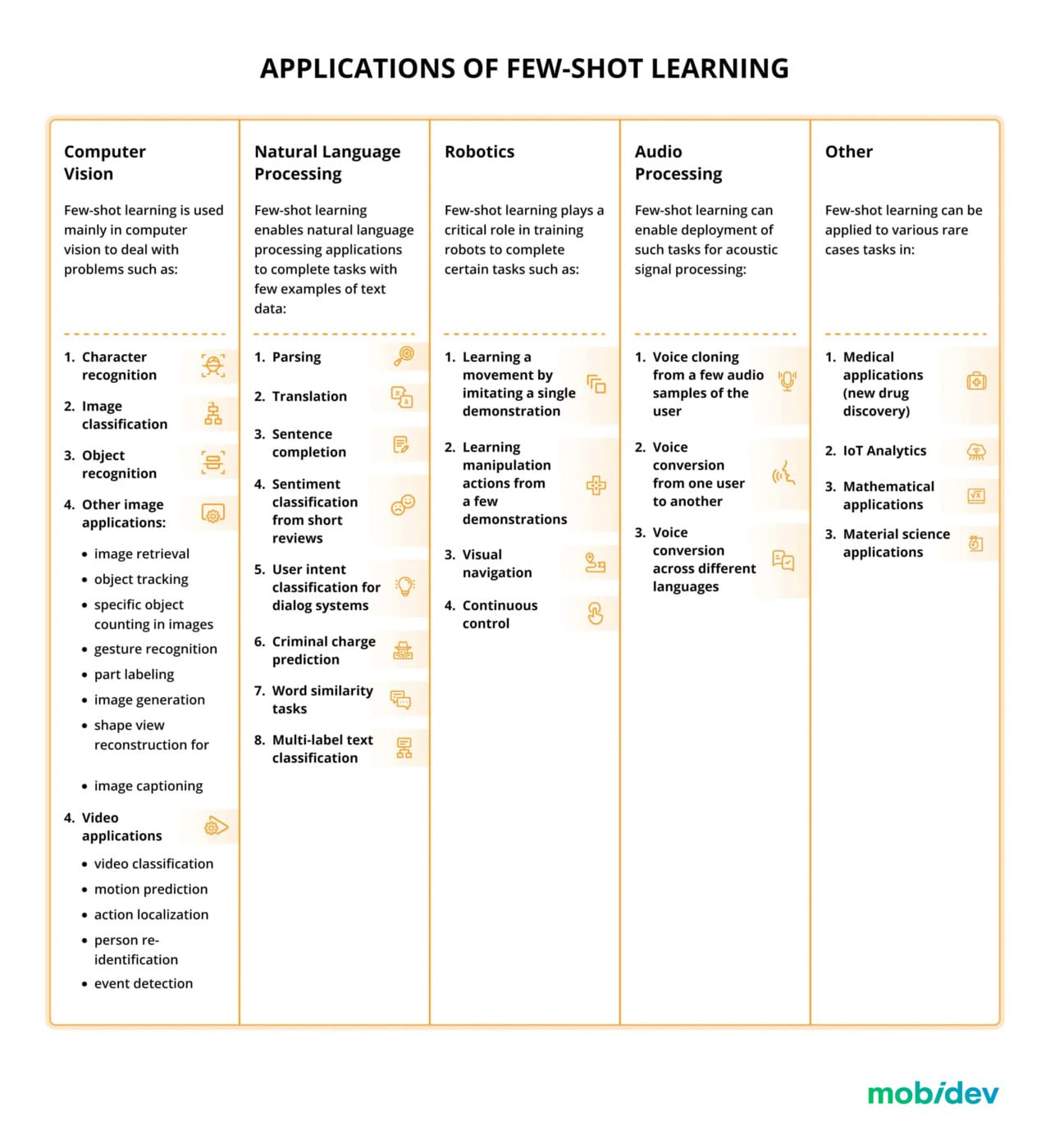As an AI Group leader at MobiDev with over 13 years of experience in software development, I’m still fascinated by the technological advancements in this field. However, with the ability to apply innovations in practice to solve specific business needs, our team can easily distinguish between truly beneficial innovations and those that still need to be developed and can’t yet bring tangible business results.
This article will delve into the latest machine learning (ML) trends, explaining how they can help your business grow.
Trend #1. Diffusion Models and LLMs for Image and Content Generation
Generating high-resolution images with high fidelity poses a complex challenge for AI models. While GANs, VAEs, and Flow Models have shown competence, achieving optimal results has been a struggle. In contrast, Diffusion Models excel in producing high-resolution images, however, with diverse quality. Nowadays, they lead the forefront of the generative AI revolution. Trendy diffusion models include GLIDE, DALL.E-3 by OpenAI, Imagen by Google, and Stable Diffusion.
In the future, large language models (LLMs) are poised to exert a significant influence. We can anticipate frequent interactions with these models to facilitate brainstorming, enhance creativity, process vast amounts of information, and potentially gain deeper insights into ourselves. Already, models like GPT-3 are aiding in tasks such as coding and writing. This can be used for various cases from performing data entry, and analyzing massive datasets to powering chatbots for better customer experiences. With rapid advancements expected, it is crucial to grasp the workings of these models to stay abreast of their evolving capabilities.
Trend #2. Cloud Data Ecosystems and Industry Cloud Platforms
The integration of cloud computing enhances the accessibility, flexibility, and cost-effectiveness of machine learning, enabling developers to expedite the construction of ML algorithms. Organizations can choose from various cloud services based on their specific use cases, utilizing offerings such as GPU as a service for ML training projects or leveraging pre-trained models through AI as a service for their applications. Cloud-based storage solutions allow cross-functional teams to access and leverage business information from any location, at any time, and on any device.
The main benefits of employing cloud computing for machine learning initiatives can be formulated as follows:
- On-demand pricing models facilitate the start of ML initiatives without the necessity of substantial investments.
- The cloud offers the speed and performance of GPUs and FPGAs, eliminating the need for hardware investments.
- Businesses can experiment with machine learning capabilities in the cloud straightaway and seamlessly scale as projects transition into production, accommodating the increasing demand for these capabilities.
- The cloud provides access to ML capabilities without requiring advanced expertise in artificial intelligence or data science.
In this regard, it’s worth mentioning Industry Cloud Platforms (ICPs) which are customized cloud solutions designed specifically for a particular industry and can be further personalized to meet the specific needs of the organization. According to Carther, by 2027, over 50% of enterprises will utilize industry cloud platforms to streamline their business activities, up from less than 15% in 2023.
Trend #3. TinyML Brings AI and IoT/Mobile Together to Create Innovative Solutions
In an increasingly IoT-driven world, TinyML is emerging as a valuable addition to the landscape. While large-scale machine learning applications exist, their usability is often limited. Smaller-scale applications become essential in various scenarios. Transmitting data to a large server for processing by a machine learning algorithm and then receiving it back via a web request can come with significant delays. A more effective approach is to leverage ML programs directly on edge devices.
Implementing smaller-scale ML programs on IoT edge devices offers several advantages, including reduced latency, lower power consumption, decreased required bandwidth, and enhanced user privacy. By avoiding the need to send data to a centralized processing center, significant improvements are achieved in latency, bandwidth usage, and power consumption. Additionally, privacy is offered at the highest level as computations occur entirely locally.
This innovative approach finds applications in diverse sectors, such as predictive maintenance for industrial centers, healthcare, agriculture, and more. Industries utilize IoT devices with TinyML algorithms to track and make predictions based on locally processed data. However, TinyML deployments can come with a challenge in terms of a skills gap. Creating and implementing TinyML applications requires machine learning expertise with a mix of expertise in both embedded systems and data science.
One of the interesting examples of incorporating ML and IoT is the tinyML application from Ribbit Networks powered by the Raspberry Pi CM4-based Frog sensor, which monitors local carbon dioxide levels to complement data provided by satellites. Another example is the Nuru app, which assists farmers in identifying plant diseases through simple image capture, employing on-device Machine Learning models powered by TensorFlow Lite. As it operates locally, there is no dependency on an internet connection.
Trend #4. Automated Machine Learning for Speed and Cost Cutting
As the demand for off-the-shelf solutions in various industries grows, AutoML steps in to provide an accessible and user-friendly solution that doesn’t require deep expertise in machine learning. The AutoML market is projected to reach USD 10.38 billion by 2030, making it one of the most promising technologies of the future.
For data scientists engaged in machine learning projects, tasks such as data preprocessing, feature development, modeling, neural network design (if deep learning is involved), post-processing, and result analysis can be complex. While AutoML doesn’t perform these tasks better than humans, it can do them automatically and, therefore, quickly. However, the accuracy might be compromised. In other words, AutoML can work as a part of the system, as it uses templates without considering specific features of the task.
AutoML introduces enhanced data labeling tools and the potential for automatic tuning of neural network architectures. Traditionally, data labeling has relied on manual efforts, often outsourced, which introduces the risk of human error. AutoML significantly reduces this risk by automating much of the labeling process. This not only decreases the likelihood of errors but also lowers labor costs, allowing companies to concentrate more on data analysis. By reducing these costs, AutoML contributes to making data analysis, artificial intelligence, and related solutions more affordable and accessible to companies in the market.
Examples of popular AutoML platforms include Google Cloud AutoML, H2O.ai, and DataRobot. They offer many AutoML tools and libraries with a wide range of functionalities to integrate into existing workflows.
Trend #5. MLOps for More Productivity, Reliability, Monitoring, and Cost Reduction
Machine Learning Operationalization Management (MLOps) involves the creation of machine learning software solutions with a keen emphasis on reliability and efficiency. This approach introduces an innovative way to enhance the development of machine learning solutions, making them more adjustable to changes in business goals and data. The increasing volume of data on larger scales necessitates higher levels of automation, which is one of the key reasons why MLOps has become essential in the field of machine learning.
One of the major elements of MLOps is the systems life cycle, introduced by the DevOps approach. Understanding the ML systems lifecycle is essential for understanding the importance of MLOps. The general roadmap can look like this:
- Design a model based on business goals
- Acquire, process, and prepare data for the ML model
- Train and tune the ML model
- Validate ML model
- Deploy the software solution with an integrated model
- Monitor and restart the process to improve the ML model: if the model predicts worse or something is wrong with the data, negative changes are detected, and the predefined pipeline for training starts to work, taking into account the metrics of training.
If the metrics of training are worse, humen involvement is required.
MLOps offers a significant advantage in effectively managing systems at scale. Dealing with challenges at larger scales becomes complex due to factors such as limited capacity in small data science teams, communication gaps between teams, shifting objectives, and more.
By adopting a business objective-first design approach, we enhance the entire process of data collection and ML solution implementation. Solutions developed through this approach prioritize considerations such as data relevancy, feature creation, data cleaning, selecting suitable cloud service hosts, and ensuring ease of model training post-deployment in a production environment.
Trend #6. Low-Code/No-Code Machine Learning for Cost Cutting
Low-code/no-code (LCNC) machine learning platforms allow non-AI experts to create AI applications from predefined components. They democratize access to artificial intelligence and machine learning. The no-code AI platforms segment dominated the market even in 2023, being responsible for more than 76% share of the global revenue.
Although no-code platforms provide a variety of pre-built components, they may face limitations in accommodating advanced customization. Users might experience constraints in implementing intricate business rules or meeting specific design requirements. Another concern is connected to scalability. While numerous no-code platforms boast scalability features, complex or highly scalable applications may necessitate custom coding for optimal performance. Scaling could be restricted by limitations within the platform’s underlying infrastructure or resource constraints.
Overall, low-code and no-code ML platforms are useful for simple ML projects like retail profits, dynamic pricing, and employee retention rates. However, the development of advanced and multifunctional projects with significant business value usually is impossible without the ML engineers’ involvement. It’s obvious that developing advanced ML projects requires a human touch to perform data analysis correctly and efficiently.
Trend #7. Unsupervised ML for Streamlining Processes
As automation advances, there is a growing need for data science solutions that operate without human intervention. The rise of unsupervised machine learning (ML) represents a promising trend across various industries and use cases. While it is established that machines cannot learn in isolation and require new information for analysis, traditional methods often involve human data scientists inputting this information.
Unsupervised ML, however, focuses on unlabeled data, operating without direct guidance from a data scientist. This approach enables machine learning programs to autonomously draw conclusions, rapidly examining data structures to identify potential patterns. This autonomous learning can enhance decision-making processes by automating and refining them further.
One effective technique within unsupervised ML is clustering, which involves grouping data points with shared features. This enables machine learning programs to efficiently comprehend data sets and recognize underlying patterns.

Learn about utilizing unsupervised machine learning algorithms for pattern identification and anomaly detection in various business cases.
Trend #8. Reinforcement Learning for Optimizing Decision-Making
In machine learning, three paradigms exist: supervised learning, unsupervised learning, and reinforcement learning. Reinforcement learning involves the ML system learning through direct experiences with its environment, where the environment utilizes a reward/punishment system to assign value to the observations made by the ML system. The system aims to achieve the highest level of reward or value, similar to positive reinforcement training for animals.
While reinforcement learning finds significant applications in video game and board game AI, caution is warranted when safety is a critical consideration. The algorithm’s reliance on random actions during the learning process might lead to deliberately unsafe decisions, posing risks to users if not monitored. Efforts are underway to develop safer reinforcement learning systems that prioritize safety in their algorithms.
The full potential of reinforcement learning as a tool in a data scientist’s arsenal will be realized when it can accomplish real-world tasks without making dangerous or harmful decisions, ensuring its responsible and secure application.
Trend #9. Multi-Modal Machine Learning for Enhanced Customer Insights
Multi-modal learning teaches a machine to process data and information from multiple modalities at once. These systems are trained on and utilize a combination of video, audio, speech, images, text, and traditional numerical datasets. Moreover, a multi-modal learning project might combine, for example, Natural Language Processing (NLP) with computer vision.
Multi-modal learning involves the simultaneous use of diverse data types to assist AI in understanding content and interpreting context more effectively, addressing limitations seen in earlier AI models.
What does it mean in practice? Integrating various data types enables AI to determine the context of an image and make more precise conclusions. For instance, combining an image of a dog with corresponding dog sounds increases the likelihood of accurately identifying the object as a dog. Similarly, pairing facial recognition with Natural Language Processing (NLP) enhances the identification of individuals.
Another use case is connected with language processing. Multimodal AI excels in executing Natural Language Processing (NLP) tasks, such as sentiment analysis. For instance, a system can detect indications of stress in a user’s voice and merge this information with signs of anger observed in the user’s facial expression. This allows the AI to customize or adjust responses to better meet the user’s needs. Additionally, integrating text with the sound of speech can assist AI in enhancing pronunciation and speech in various languages.
Trend #10. Few-Shot Learning for Data Efficiency
Data collection is a crucial aspect of machine learning procedures. Despite its significance, it is often regarded as one of the most labor-intensive tasks and is susceptible to errors when not executed accurately. The effectiveness of a machine learning algorithm is significantly influenced by the quality and nature of the provided data. For example, a model trained to identify different breeds of domestic dogs would require additional classifier training to accurately recognize and categorize wolves.
Few-shot learning focuses on limited data. While this has limitations, it does have various applications in fields like image classification, facial recognition, and text classification. Although not requiring a great deal of data to produce a usable model is helpful, it cannot be used for extremely complex solutions.

Similarly, one-shot learning uses even less data. However, it has some useful applications for facial recognition. For example, one could compare a provided passport ID photo to the image of a person seen through a camera. This only requires data that is already present and does not need a large database of information.
Zero-shot learning is initially a confusing prospect. How can machine learning algorithms function without initial data? Zero-shot ML systems observe a subject and use information about that object to predict what classification they may fall into. This is possible for humans. For example, a human who had never seen a tiger, before but had seen a housecat, would probably be able to identify the tiger as some kind of feline animal.
Although the observed objects are not seen during training, the ML algorithm can still classify observed objects into categories. This is very useful for image classification, object detection, natural language processing, and other tasks listed in the picture below.

The best example of a few-shot learning application is in drug discovery. In this scenario, the model is trained to explore new molecules and identify valuable ones for potential inclusion in novel drugs. Given the potential toxicity or ineffectiveness of new molecules that have not undergone clinical trials, it becomes crucial to train the model using a limited number of samples.
Trend #11. Domain-Specific ML for Improved Performance
Along with multifunctional ML solutions, domain-specific ones that address the needs of specific industries are gaining momentum. Industry knowledge helps data scientists save time with ML models that already fit business needs and require fewer iterations to meet the use case. Domain expertise is crucial to defining the use case and developing successful ML models. Let’s take a brief look at how ML transforms traditional workflows in various industries.
Banking and finances
In fintech, ML is currently employed for tasks like fraud detection and automation of repetitive tasks through bots. Further developments include more sophisticated applications such as customer sentiment analysis, investment modeling, trading, and advanced risk prevention methods in the foreseeable future. Machine learning models are also expected to empower traders with the ability to proactively mitigate risks and forestall market crashes.
Healthcare
In the healthcare sector, machine learning is making significant changes. Beyond its current uses in medical image analysis and disease diagnosis, there are advancements in personalized treatment plans, drug discovery, and predictive analytics. Machine learning algorithms have the potential to enhance patient care by providing more accurate diagnostics, optimizing treatment strategies, and improving overall healthcare efficiency.
Another interesting use case is connected with the human pose estimation capabilities of ML. Human Pose Estimation (HPE) is a computer vision task focused on identifying and accurately tracking key points of the human body. These points are critical for recognizing motion patterns, determining joint positions, and analyzing overall posture. HPE finds applications in diverse tasks such as body motion detection, posture correction, exercise supervision, and AI-driven fitness coaching.
Manufacturing
ML has transformative applications in the manufacturing industry, driving efficiency, improving processes, and optimizing production. For example, ML algorithms analyze equipment sensor data to predict when machinery is likely to fail. This helps in scheduling preventive maintenance, reducing downtime, and extending the lifespan of machinery. ML algorithms can be employed for visual inspection as ML models can detect defects or anomalies in real-time by analyzing images or sensor data.
ML is also used for demand forecasting, optimizing inventory levels, and improving supply chain efficiency.
Retail
Retailers can enhance store layouts, product placement, and marketing strategies by employing machine learning algorithms and computer vision technology. These tools enable tracking customer movements, product interactions, and foot traffic patterns to optimize the overall shopping experience. Powered by ML and AR, virtual try-on solutions are turning the world of retail on its head, offering personalized and realistic experiences for customers.
ML algorithms can also enhance POS systems by analyzing sales data and providing merchants with valuable insights. This can provide benefits in the form of more accurate inventory management, personalized promotions, sales forecasting, and more.
Marketing
ML has a promising potential to enhance and streamline marketing activities from chatbots and virtual assistants in customer care to helping with analytics and data mining. For example, ML algorithms of the SocialMiningAI tool search in real-time through millions of public social posts to identify prospective customers with high intent to make a purchase. With the help of natural language processing (NLP) and image recognition algorithms, it’s simple to identify a potential lead who is interested in a specific service or a product.
Trend #12. Ethical and Explainable AI
The topics of ethics and explainability in AI and ML are in the spotlight with more and more organizations considering the incorporation of ethical considerations and transparency mechanisms into artificial intelligence systems. In AI app development, ethical considerations focus on ensuring fairness, accountability, and responsibility. This involves addressing biases in algorithms, preventing discrimination, and considering the social impact of AI applications.
AI explainability refers to the ability of an AI system to provide understandable and transparent explanations for its decisions and actions. This is crucial in scenarios where AI systems impact human lives, such as healthcare, finance, and criminal justice. Transparent AI systems not only build trust, but also enable users to comprehend and contest decisions made by the AI.
Although ML is often seen as an innovative solution for startups, established companies are increasingly integrating this technology to stay competitive and meet changing customer expectations. However, a common challenge for both new and existing businesses is the absence of a well-defined strategy for the successful adoption of artificial intelligence. AI product consulting services have the potential to fill this gap by bridging the divide between business objectives and technological capabilities, enabling the seamless and effective implementation of ML solutions.
We'll support you throughout the AI journey
From idea crystallization to its tech implementation
AI PRODUCT CONSULTING SERVICESThe Future of Machine Learning
With the global ML market expected to grow from $26.03 billion in 2023 to $225.91 billion by 2030, these rapid advancements are propelling industries toward higher levels of sophistication. In some cases, adopting this technology has become compulsory for maintaining competitiveness. However, relying solely on the utilization of one or two particular technologies has its limits. Excellence in the market and exploration of futuristic possibilities, once considered science fiction, require innovative approaches in AI and ML app development to achieve goals in novel and unique ways.
Each business objective demands distinct methods for attainment. Engaging with experts to determine the most suitable technologies, including machine learning, can enhance the efficiency of your business and contribute to realizing your vision of providing the best support to clients in various industries.
If you have questions about the technology discussed here and how it can best be applied to your business, please reach out to us using the form below.





